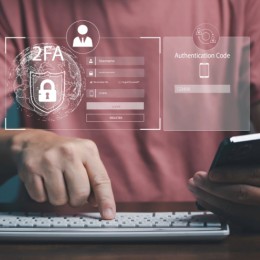
The Urinary System
The urinary system contains two kidneys, two ureters, the bladder and the urethra. The kidneys filter the blood and produce urine. The urine travels from the kidneys down the ureters and into the bladder, where it is stored until emptied during urination or catheterization. The urethra is the tube that empties the urine out of the body.
When the bladder is full, the brain sends a signal down the spinal cord to the bladder, causing it to empty. For people with spinal cord issues, the signal
from the bladder to the brain gets interrupted, making them unable to empty their bladder.
When people are unable to empty their bladder on their own, they are at risk for urinary tract infections, as well as incontinence or involuntary loss of urine. When urine stays in the bladder and is not emptied, bacteria can grow, causing infections which can lead to illness. Research has shown that self-intermittent catheterization helps reduce urinary tract infections, control urinary leakage (incontinence) and prevent urinary tract damage.
Introduction to Self- Intermittent Catheterization
Intermittent catheterization is the periodic emptying of the bladder by the insertion of a hollow plastic tube (catheter) into the urethra, past the sphincter muscle and into the bladder. Urine then passes out of the bladder through the catheter.
Intermittent catheterization is used when a person is unable to empty her bladder. Medical conditions that often require intermittent catheterization include spinal cord injuries, spina bifida and multiple sclerosis, to name a few.
Intermittent catheterization must be done at regular intervals each day to keep the bladder healthy.
Your healthcare provider has recommended clean self-intermittent catheterization to help empty your bladder and keep your urinary system healthy.
How Often Should I Catheterize?
Your healthcare provider will let you know how often you will need to perform clean
self-intermittent catheterization and the size of the catheter you will need. Normally, self-intermittent catheterization is performed every four hours starting when you wake up in the morning and continuing every four hours until bedtime. Some people catheterize on a more frequent schedule. Most people who catheterize do not need catheterization at night. Your healthcare provider will let you know if you need catheterization at night.
Where Do I Get Catheters?
You will be taught clean self-intermittent catheterization by your healthcare provider who will decide the size and style of catheter that you will need. Your healthcare provider will provide a prescription for the catheter supplies. The prescription will be sent to a medical supply company like Binson’s that will provide you with the supplies.
Source:
This educational material is provided by Cure Medical in an effort to answer questions and address possible concerns about the intermittent catheterization
process. By following the simple steps for clean self-intermittent catheterization,
it is possible to quickly master the technique and make the process part of your
daily routine for bladder management and urinary tract health.
Cure Medical wishes to thank Anne Boisclair-Fahey, DNP, RN, CPNP for
writing this educational material. She is a nurse practitioner in pediatric urology
at the University of Minnesota.
This instruction guide is not a substitute for medical advice from your
healthcare provider.










0 comments